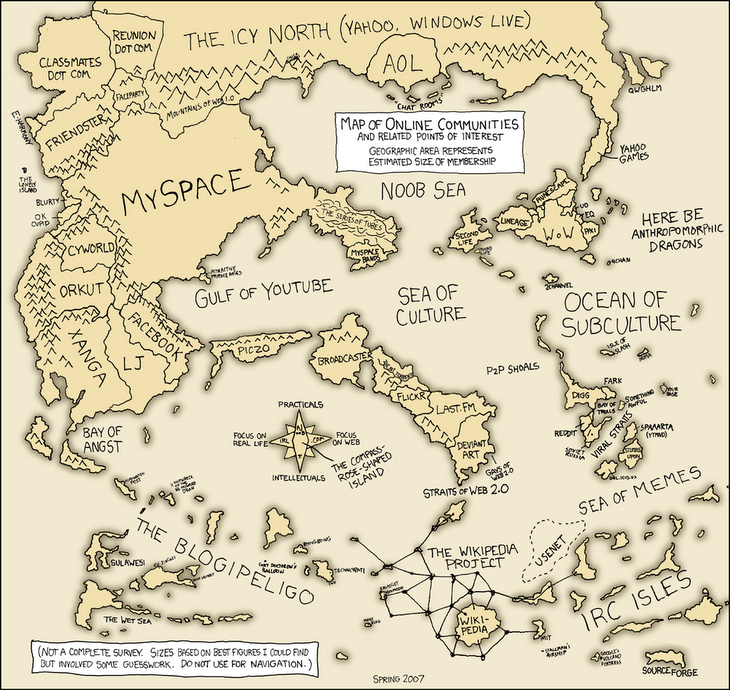A fantastic empirical study using paychological assessment measures...
Intro
•discusses responses to Facebook as well as describes it- negative reprecussions the popular focus- schism between perceived and actual audience; privacy issues.
•A 2005 survey found that 90% of undergrads use an online social networking service (Stutzman)
•In spatially bounded sites such as Facebook, identity claims are less easily falsified, allow for accumulation of social capital with regard to acquaintances (though not necessarily deepening relationships) and ability to maintain a large network of social ties.
•Rheingold's work explored communities whose interaction extended from offline to online, as opposed to the Facebook.
•The gaps between connected individuals may actually increase the flow of information- from one group for which the knowledge is mundance, to another for which the information is novel.
•Differentiates between bridging and bonding social capital.
Method
•Study asked three questions: Who is using Facebook? How are students using Facebook? and What is the relationship between Facebook use and social capital?
•Random sample of 800 MSU students were surveyed (survey site: http://www.zommerang.com). 286 responded.
•Four measures:
1. Demographics/descriptives
2. Facebook usage
a. Intensity: integration into daily life, emotional connection, number of friends, time spent on site
b. Types of Use: information seeking vs. entertainment, maintaining old contacts vs. seeking new ones
c. Perceived Critical Mass: whether respondents perceived their contacts as also using Facebook.
3. psychological assessment
a. Satisfaction with life at MSU
b. Self-esteem
4. social capital measures
a. Bridging Social Capital: outward looking, broad range of contact, perception of oneself as part of a larger group,
reciprocity with a broader community
b. Bonding Social Capital
c. High School Social Capital
Results
• 94% use Facebook, no difference in demographics.
• Members report significantly higher high school social capital.
• More likely to use for killing time than gathering information.
• 10-30 minutes/day, 150-200 friends.
• Much more likely to interact with preexisting connections than meet new people.
• Assume their friends are using Facebook and will continue to do so.
• Results demonstrated the large role Facebook plays in developing and maintaining bridging social capital at their school.
• Those reporting low satisfaction and self-esteem appear to gain the most social capital from intense Facebook use.
• Using Facebook to meet new people was negatively associated with social capital.
• NO CORRELATION BETWEEN GPA AND INTENSITY OF FACEBOOK USE
• Implication that Facebook may crystallize relationships that would otherwise remain latent, such as classmates.
---
Repeat studies over time would help to establish causality- this study only proves correlation. Also, the researchers suggest pairing survey methods with actual measures of use (assessing Facebook profiles themselves)- a possibility for my own research. Another possibility is looking at how alumni use Facebook to maintain old college ties.
There is a notable trend in the use of online communities to strengthen and maintain existing relationships, as opposed to the older research on online communities (which focused on the formation of new ties). This suggests a movement toward integration of the offline and online worlds. In this way, internet communities may be seen as extensions of offline communities, offering a plethora of tools to strengthen weak bonds and maintain strong ones.
---
References to check out:
-Hampton & Wellman - online social networking enhances place-based communities
-Gross & Acquisti - Facebook 2005
-Stutzman - Facebook 2006
-Hamatake et al; - Facebook 2005
April 3, 2007
Subscribe to:
Post Comments (Atom)






No comments:
Post a Comment